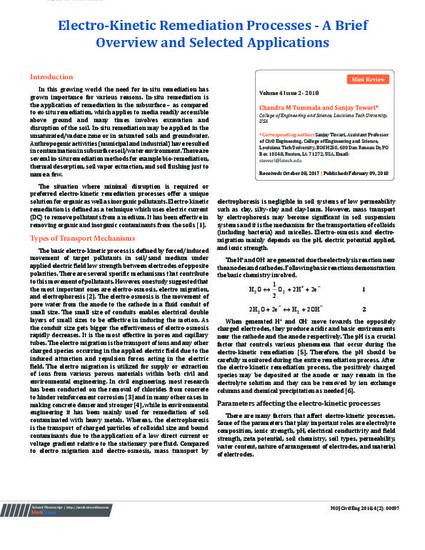
In this growing world the need for in-situ remediation has grown importance for various reasons. In-situ remediation is the application of remediation in the subsurface – as compared to ex-situ remediation, which applies to media readily accessible above ground and many times involves excavation and disruption of the soil. In-situ remediation may be applied in the unsaturated/vadoze zone or in saturated soils and groundwater. Anthropogenic activities (municipal and industrial) have resulted in contamination in subsurface soil/water environment. There are several in-situ remediation methods for example bio-remediation, thermal desorption, soil vapor extraction, and soil flushing just to name a few.
The situation where minimal disruption is required or preferred electro-kinetic remediation processes offer a unique solution for organic as well as inorganic pollutants. Electro-kinetic remediation is defined as a technique which uses electric current (DC) to remove pollutants from a medium. It has been effective in removing organic and inorganic contaminants from the soils.
Available at: http://works.bepress.com/sanjay-tewari/18/
